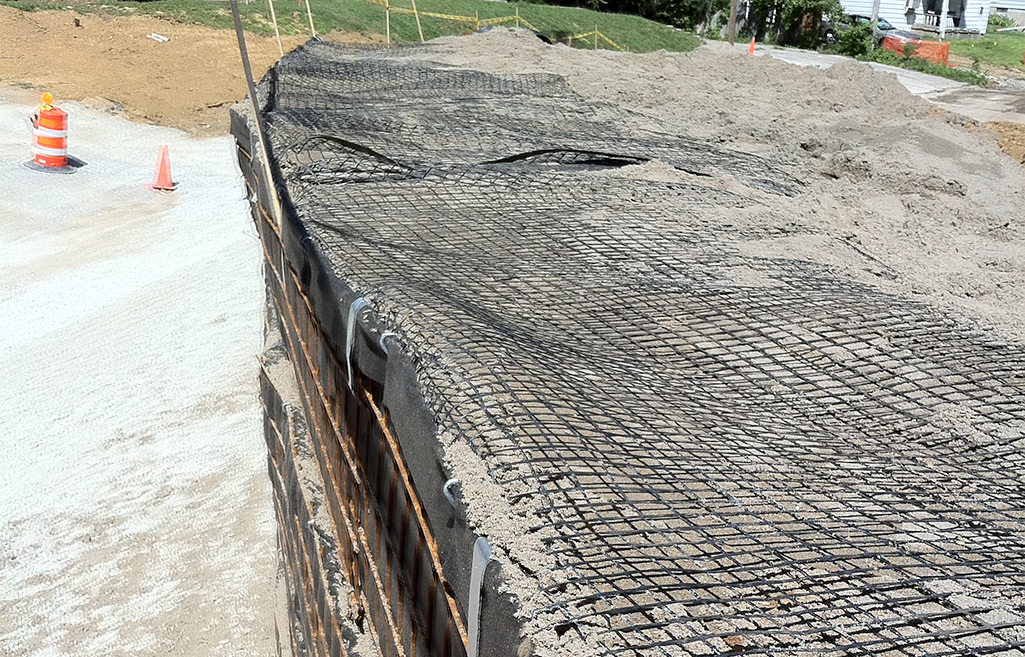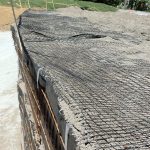- Home
- About Us
- Explosives Services
- Environmental Materials
- Hardscapes & Outdoor Living
- Industries
- Applications


Reinforced soil slopes (RSS) are defined as structures with face inclinations of less than 70 degrees from the horizontal (FHWA, 2009a). A critical aspect of the design of reinforced slopes is the facing system. The erosion protection facilitates vegetation establishment and/or provides structural support for forming “over-steepened” slopes.
The stability of a slope is achieved through the integration of carefully selected reinforcement materials alongside engineered soil compositions. These materials, such as geogrids and geotextiles, work in harmony with the soil to provide structural integrity, enabling slopes to achieve angles and heights that would not naturally occur. Vegetated or aesthetic facings are often incorporated to enhance environmental appeal, mitigate erosion, and further strengthen these engineered formations. Drainage systems are another critical component, ensuring that water does not accumulate within the slope, which could compromise its stability or effectiveness in seismic conditions.
Temporary MSE walls are frequently used in fill applications where access needs to remain open while installing extended fill depths adjacent to the access. These temporary structures are frequently used for road expansion or bridge building projects during construction phasing. Geogrids or geotextiles can be utilized for reinforcement and frequently, it may not require a facing element but instead is wrapped with reinforcement. To wrap the slope face, turn the reinforcement up and extend it at least 3 feet (1 meter) into the slope beneath the next layer. For structures with geogrid wrapped faces, a geotextile fabric may be needed to retain backfill soils, especially slopes steeper than 1(H): 1(V). For Installation simplicity, wire facing units can be used.
Key Features of Reinforced Soil Slopes
RSS are engineered structures that consist of soil reinforced with high tensile strength geosynthetics, typically geogrids or geotextiles, and an erosion control facing that can allow vegetation to take hold to improve aesthetics. With the use of geosynthetic reinforcement, it is possible to construct slopes steeper than 2:1 up to 70 degrees. RSS are commonly used in roadways, embankments, overpasses, and landscaping projects to maximize land use.
Advantages
Design Considerations